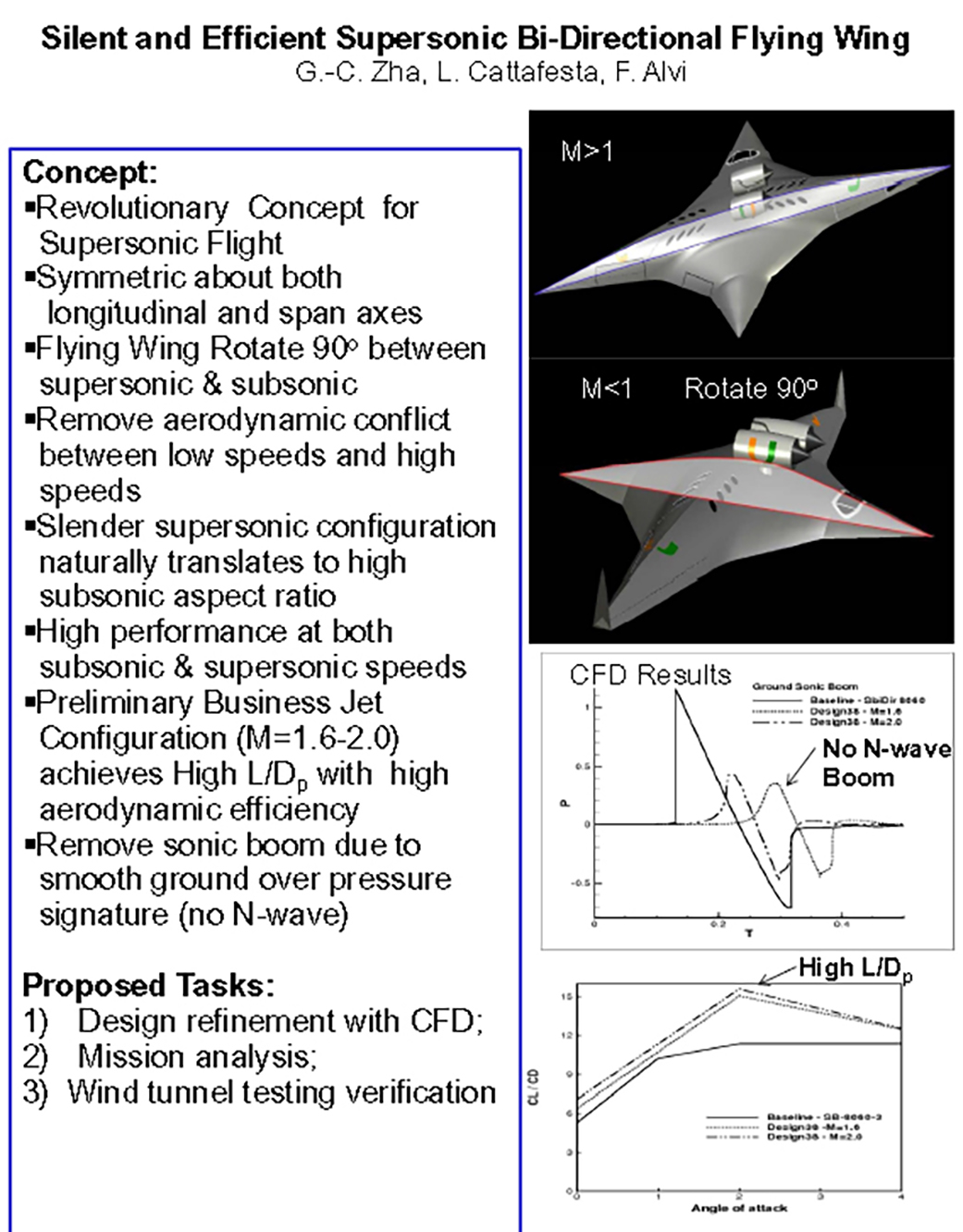Gecheng Zha
University of Miami
NIAC 2012 Phase I Zha Silent and Efficient Supersonic Bi-Directional Flying Wing Final Report
Description
We propose a Phase I study for a novel concept of a supersonic bi-directional (SBiDir) flying wing (FW) that has the potential to revolutionize supersonic flight with virtually zero sonic boom and ultra-high aerodynamic efficiency. The SBiDir-FW planform is symmetric about both the longitudinal and span axes. For supersonic flight, the planform can have as low aspect ratio and as high sweep angle as desired to minimize wave drag and sonic boom. For subsonic mode, the airplane will rotate 90deg in flight to achieve superior stable aerodynamic performance. The conflict of subsonic and supersonic aerodynamic performance of conventional fuselage-wing configuration is hence removed. The preliminary CFD simulation for a SBiDir-FW business jet (BJ) at Mach numbers of 1.6 and 2.0 indicates that the configuration generates no N-wave sonic boom on the ground at a high lift to pressure drag ratio L/Dp of 16. The superior supersonic aerodynamic performance is benefited from the sharp nose and ultra-slender body with a low aspect ratio of 0.33, which translates to a very high subsonic aspect ratio of 33 for high subsonic performance. This proposal has three objectives: 1) design refinement of a supersonic SBiDir-FW BJ configuration using CFD; 2) mission analysis assisted with CFD simulation for the supersonic SBiDir-FW BJ to study the feasibility; and 3) wind tunnel testing of the SbiDir-FW BJ to verify its supersonic aerodynamic performance and sonic boom signature. The research team is highly qualified to perform the proposed tasks.































